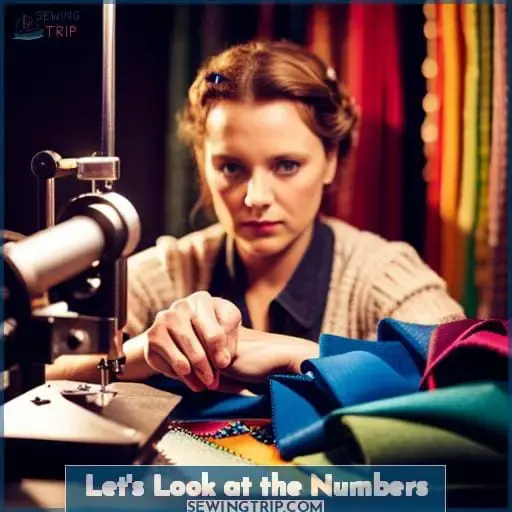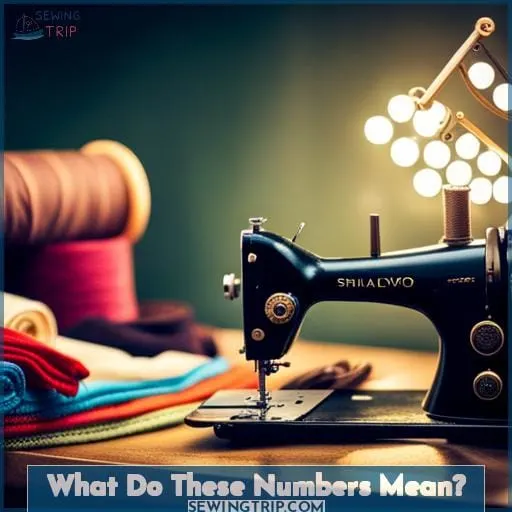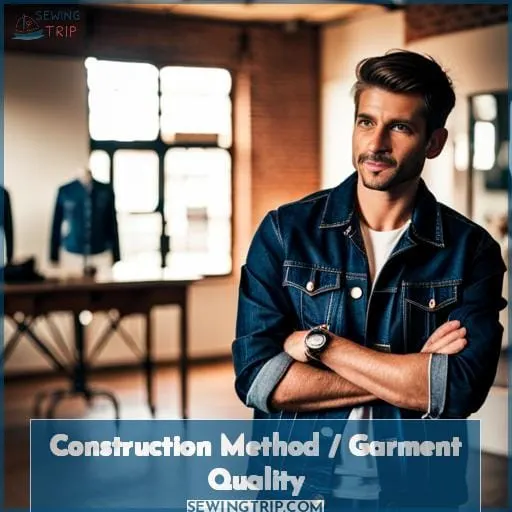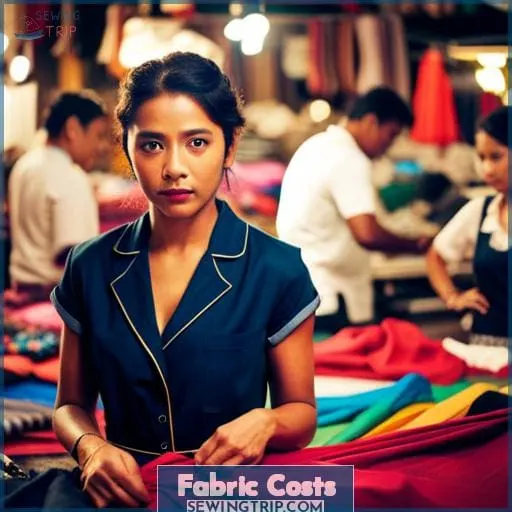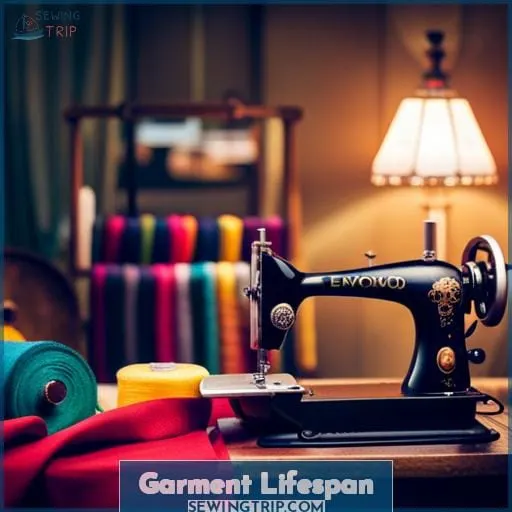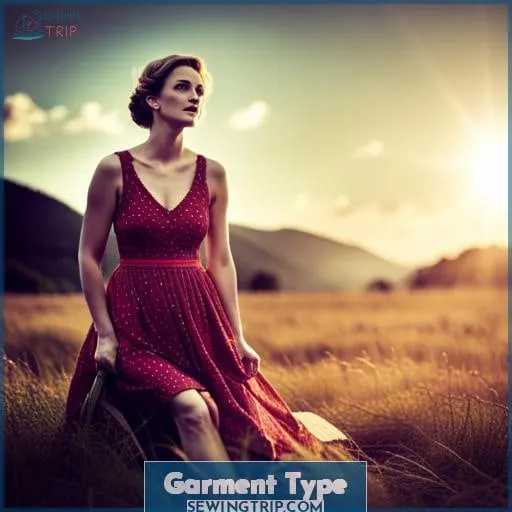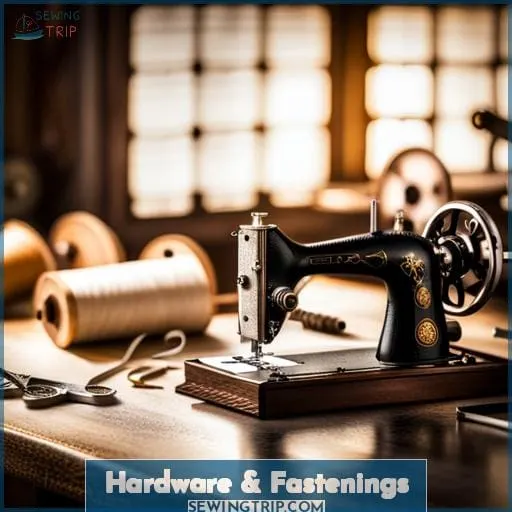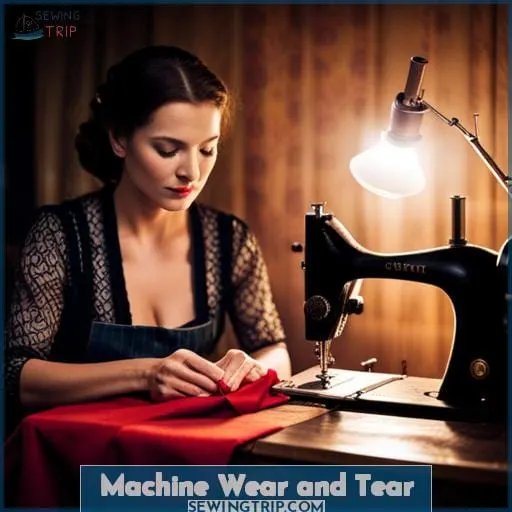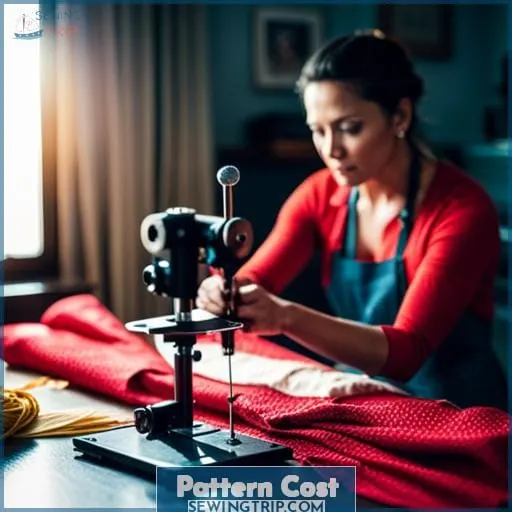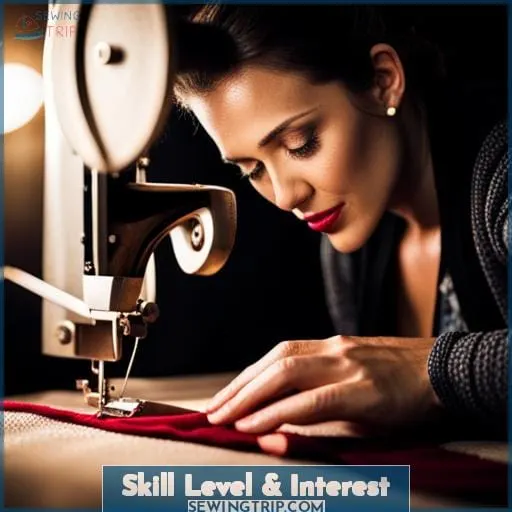This site is supported by our readers. We may earn a commission, at no cost to you, if you purchase through links.
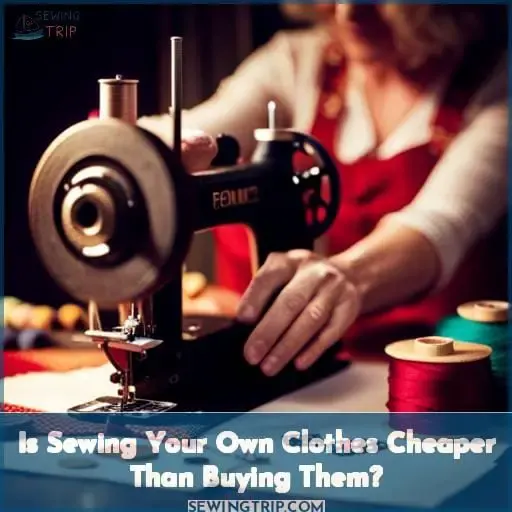 My darlings, fashion your dreams into reality with needle and thread! Sewing your own clothes may seem like an extravagance at first glance. Yet beneath the fabric lies profound meaning – an act of love, creating something beautiful and unique.
My darlings, fashion your dreams into reality with needle and thread! Sewing your own clothes may seem like an extravagance at first glance. Yet beneath the fabric lies profound meaning – an act of love, creating something beautiful and unique.
Each stitch weaves the fabric of identity, crafting self-expression from imagination. Savor the journey from the first pattern to the finished garment. Discover sewing’s sensual pleasures – the luxurious textures of fine fabrics, the tactile joys of creation.
This path offers liberation from the shackles of mass production, awakening personal power and mastery. Sewing is cheaper than buying clothes? For the price of a few ready-made pieces, indulge in yards of luscious materials, patterns galore.
Construct quality items made just for you. Cherish their longevity, unlike fast fashion’s fleeting thrills.
Darlings, seize your power – pick up the needle and thread, feel fabrics’ caress, create the wardrobe of your dreams! Sewing’s delights await.
Table Of Contents
Key Takeaways
- Sewing your own clothes can be more cost-efficient than buying them.
- Handmade garments, such as jeans, button-up shirts, jackets, leggings, and jumpsuits, can be more affordable compared to fast fashion options.
- Sewing allows for customization and the ability to choose higher quality fabrics, resulting in longer-lasting clothes.
- The cost of fabric is influenced by factors such as its complexity, fiber content, weave, and origin.
Let’s Look at the Numbers
Before we delve into the numbers, let’s consider key garments where sewing your own clothes can really pay off: For essentials like jeans, button-ups, jackets, leggings, and jumpsuits, you’ll find that handmaking them is cheaper than buying, even when factoring in fabric and tool costs.
Calculating the exact cost differences will illuminate where homemade clothes provide the best value over store-bought.
Jeans
When it comes to jeans, you’ve gotta factor in the fabric and hardware costs if you want them to last – those can really add up compared to just grabbing a pair off the rack. Quality denim with leather patches, specialized tailoring like waist suppression, and bar tack stitching take more time and money upfront, but save you cash down the line since they hold up better.
Choosing organic cottons or doing your own fabric dyeing gets pricey too, but caring for people and the planet’s worth factoring into the cost per wear.
Button-up Shirts
You can craft a custom cotton shirt for considerably less than the store-bought alternative, plus the tailored fit will make you look sharp as a thumbtack. When selecting fabric, mind shrinkage and quality testing. Adjust the pattern for an ideal fit.
Account for sizing variability. Refine fit with multiple fittings. Quality materials and time invested result in a well-fitting garment you feel empowered making yourself.
Jackets
Though jackets may seem pricier to sew, an Everlane jacket runs around $120 while the indie brand Lark & Ro’s jackets average $80. When choosing a jacket pattern, consider features like a detachable hood, lining, and seam reinforcements based on your lifestyle needs.
Durable, quality fabrics justify the initial investment in a handmade jacket. With practice, you can sew stylish outerwear for less than retail, empowering you to make economic decisions and thoughtfully apply your labor.
Leggings
Thine soul feels enlightened when crafting leggings, for the process empowers and liberates. Though buying may seem more expedient, creating transcends monetary value. When drafting the pattern, mind the waistband’s construction and fabric’s compressive durability.
Test the fit often. Adjust sewing machine settings for spandex. Calculate cost savings versus fast fashion’s uncertain ethics.
Jumpsuits
However, maintaining a pattern library and a proper fabric stash enables handcrafting affordable, custom-fitted jumpsuits. Carefully choose stretch fabrics for comfort. Refine bodice tailoring for an ideal fit.
Consider exposed zippers for practicality and adjustable straps for flexibility. Select breathable, durable fabrics. With practice, sewing a stylish jumpsuit becomes an economical solution showcasing your skills, fabric selections, and indie designer patterns.
What Do These Numbers Mean?
You’re now seeing the significance of a smart shopping strategy. As you break down the price components, reflect on what truly brings you joy. Does a $5 polyester top spark happiness, or do you gain more satisfaction from sewing a cotton blouse yourself? Consider price versus utility, labor versus enjoyment, fashion versus sustainability.
Your sewing budget factors in fabric choices, labor expenses, and desired garment lifespan. Opt for quality fabric and stitch with care – this liberates you from the churn of fast fashion. With each handmade piece, you cultivate self-reliance and reject convenience. Mastery arrives not through quantity but by perfecting your craft.
Seek quality goods that empower and last. Let these numbers guide you towards purposeful purchases.
Construction Method / Garment Quality
Have you ever wondered if it’s cheaper to make your own clothes than to buy them? Let’s compare the costs of fast fashion, ready-to-wear, luxury, and haute couture using denim jeans as a case study to see how construction quality impacts value.
Fast Fashion
You’d see that the fast fashion industry exploits cheap overseas labor and dumps poorly-made garments to turn quick profits. Their mass-produced apparel lacks worker protections, sustainability, and traceability.
But you can resist exploitative practices through ethical consumption and sewing. With time invested in a sewing machine, you can craft quality garments, free from an industry that disregards people and the planet.
As a garment sewist, you have the freedom to choose fabric and construction for items to treasure.
Ready to Wear Fashion (Pret a Porter)
You can find quality ready-to-wear fashion at reasonable prices if you know where to look, with independent labels often emphasizing fabric quality and fair labor costs over huge markups. Seek out brands that focus on sustainable practices and innovative textiles while avoiding cheap synthetics.
Well-made ready-to-wear can rival bespoke tailoring in fit and finish, without the endless costs of custom garments.
Luxury Fashion
When splurging on couture, handcrafted luxury transcends price.
- Invest in timeless, elegant pieces made with premium fabrics and impeccable construction.
- Seek out ethical, sustainable practices like fair wages and reduced environmental impact.
- Attend haute couture shows to admire exquisite craftsmanship and artistry.
- Treasure special occasion garments designed just for you as heirlooms.
For special celebrations and black tie events, well-made luxury fashion offers enduring style and quality craftsmanship. Classic silhouettes in rich fabrics elevate your look beyond fleeting trends. Timeless investment pieces bring joy for years as memories come alive each time you wear them.
Haute Couture
While haute couture commands premium prices, your own two hands craft garments money can’t buy. Perfect bespoke garments with hand-sewn details using quality tools. Refine independent patterns, ensuring a perfect fit.
Source sustainable fabrics, support fair labor. Embellish with luxury trims. Haute couture results from the mastery of skills, not inflated price tags.
Denim Jeans Case Study
Essentially, jeans cost analysis illustrates the influence of fiber quality on garment longevity and sustainability. Recurring wear tests fabric durability, while machine stitching loosens. Comparing waistband tension and pocket elasticity across brands reveals fade resistance.
The origin of denim and ethical production impact the cost per wear. Pattern making demands precision in crafting durable seams. Investing in quality lasts longer, reducing waste from replacements. Sew your own with care, mindfully sourcing quality materials.
Fabric Costs
You select reasonably-priced, high-quality fabrics for longevity versus frequently replacing cheap, poor-wearing clothes.
- Organic cotton offers softness and durability.
- Linen provides breathability in warm weather.
- Wool keeps you cozy when it’s cold.
Thoughtfully choosing fabrics can save money in the long run. Seek out sustainable brands that value supply chain transparency and fair labor standards. Often, natural fabrics wear better than synthetics. Prioritize composition when scanning tags at the fabric store or thrift shop.
With some clever sewing, even damaged garments can be upcycled into new creations. Kids’ clothes are a thrifty find for knit patterns. Follow care instructions to extend a garment’s lifespan. By investing in quality materials and learning construction techniques, you gain independence from mass-market consumerism.
Garment Lifespan
You already know that sewing your own clothes requires an initial investment in materials and tools. However, when made with quality fabrics and hardware, handmade garments often last longer through careful cleaning and maintenance, lowering their long-term cost per wear compared to off-the-rack disposable fashion.
Cleaning
You’re tasked with considering laundering needs when calculating long-term costs. Handwashing may be required for delicate fabrics like silk or cashmere. Check clothing tags for dry cleaning marks. Wash darks separately and skip the bleach to preserve color. Invest in laundry bags for bras and sweaters.
Choose gentle detergents and skip fabric softeners, which can degrade fabric over time.
Cost Per Wear
The longevity of a garment determines its true cost per wear. Opting for quality construction and fabrics satisfies a desire for mastery while yielding greater value. An exclusive brand flatters our psyche, yet overlooks labor ethics. Donating quality items extends their lifespan.
Calculating cost per wear illuminates the worth of well-made clothes. Ethical and enduring pieces crafted with care bring lasting joy.
Garment Type
Certain projects require more skill and interest than others. A simple t-shirt requires minimal fabric yield and offers little customization, though high-quality fabric boosts longevity. Conversely, a tailored blazer demands precision cutting and quality interfacing for structure.
The investment warrants multiple wears and potential resale value. Consider your lifestyle needs and skills. Seek garments with versatility: an A-line dress over narrow pants. Black and white patterns serve year-round.
Embrace small starts, like napkins from yardage remnants. Each project builds confidence for more complex endeavors. Let go of perfectionism. Imperfect seams hold better memories than store-bought anonymity.
Hardware & Fastenings
When selecting hardware and fastenings, durability should be your top concern. Metal rivets and buttons last longer than plastic alternatives. Opt for custom embroidery or colorful stitching effects to make basic denim buttons and hardware feel special.
While decorative touches appear minor, small details greatly impact the personality and longevity of any handmade garment. Don’t skimp on quality – your hard work deserves to stand the test of time. Thoughtfully chosen fastenings with care put into each stitch elevate a homemade piece.
Handcrafting also allows total creative freedom in these final embellishing touches. Take advantage of this flexibility to showcase your distinct style. Meticulous care in finishing gives your wardrobe an unmatched artisanal flair.
Machine Wear and Tear
You’d be nuts not to factor in the wear and tear on your machine when calculating the real cost of making your own clothes.
- Replacing the drive belt every 2 years.
- Adjusting presser foot pressure regularly.
- Following the maintenance schedule.
- Only using quality machine oil.
- Having the hand crank option for power outages.
The machine that stitches your dreams together deserves some TLC. Stay on top of servicing and maintenance so your trusty companion keeps humming. Splurge on the good oil to keep her purring smoothly. Adjust presser foot pressure before each new project.
With some care and attention, she’ll be stitching your visions into reality for years to come.
Pattern Cost
Explore a world of creative possibilities by delving into the realm of patterns – they’re like blueprints that enable you to craft unique garments tailored to your style and preferences. Sourcing options for patterns range from free online resources to commercial pattern brands.
Design impact is profound, as patterns allow you to experiment with diverse styles, silhouettes, and details. Pattern variety ensures you find the perfect match for your envisioned masterpiece.
Beyond aesthetics, patterns contribute to cost efficiency, as reusable patterns amortize their initial cost over multiple creations. As you work with patterns, your skill development soars, enhancing your sewing prowess.
Embrace this key to empowerment, harnessing the ability to transform fabric into personally curated fashion statements.
Remember, patterns not only shape fabric but also your journey towards mastery in clothing construction and design.
| Aspect | Influence |
|---|---|
| Sourcing Options | From free online resources to commercial brands, choose patterns that align with your vision. |
| Design Impact | Patterns enable experimentation, giving unique styles and silhouettes to match your taste. |
| Pattern Variety | Find the perfect fit for your ideas, exploring diverse options that cater to your creativity. |
| Cost Efficiency | Reusable patterns spread their cost, amplifying savings as you craft more customized pieces. |
| Skill Development | Working with patterns sharpens your sewing skills, nurturing mastery in garment construction. |
Skill Level & Interest
Amidst the realm of creation, your journey unveils the tapestry of your capabilities, weaving threads of skill and passion to sculpt garments that bear the very essence of your style.
As you delve into sewing, you’ll find a satisfying trajectory of skill progression. Each stitch and seam is a step forward, nurturing your expertise in clothing construction and design.
The sewing process brings not just financial savings, but a sense of sewing enjoyment that springs from crafting personalized creations. Creative satisfaction arises from turning fabrics into unique pieces that mirror your vision.
This path isn’t solely about budgeting; it’s about realizing the skill-based savings that accrue as your abilities expand. Your garments embody liberation, reflecting your mastery over the art of fashion, enhancing both your wardrobe and your inner power.
Frequently Asked Questions (FAQs)
How do the construction methods and garment quality differ between handmade and store-bought clothes?
Create clothing with personal mastery. Handmade garments offer control over construction and fabric choice, ensuring quality. Express your style with liberation and ethical values, crafting a wardrobe of lasting value.
What factors contribute to the variation in fabric costs for sewing clothes at home?
Unlocking the realm of fabric costs involves a delicate balance between understanding fiber intricacies and having financial acumen. Decipher the fabric’s essence by considering its content, weave, and origin. Uncover the symphony of your budget by carefully measuring your desires and resources.
How does the lifespan of a self-sewn garment compare to that of a commercially bought garment?
Crafted with care, your self-sewn garment surpasses commercial counterparts. It’s an investment in quality, durability, and personal style.
What role does the choice of hardware and fastenings play in the overall quality of sewn clothing?
Choose hardware wisely, for it’s the heartbeat of garments. Imagine a door with a flimsy handle – a masterpiece tarnished. Similarly, garment fastenings impact integrity, revealing your mastery on the path to sartorial liberation.
How does the cost of patterns influence the economic feasibility of sewing clothes, and how do these costs relate to skill level and personal interest?
To make sewing economically viable, consider the cost of patterns in relation to skill level and personal interest. Begin with simple, reusable patterns and gradually develop your skills. Make wise investments in patterns that align with your style and growth.
Conclusion
As you reflect on the numbers presented throughout this exploration, envision yourself stepping into a world where creativity intertwines with resourcefulness. Imagine crafting your very own denim jeans, meticulously sewing the stitches that express your unique style.
Consider the satisfaction of assembling a button-up shirt that fits you flawlessly, or fashioning a jacket that exudes both warmth and elegance.
These numbers unveil more than just cost comparisons; they unveil the value of your time and effort, the story woven into each thread. Delve deeper and you’ll find that constructing your own garments is not merely about the immediate monetary savings, but also about the journey of mastering a skill, the joy of creation, and the empowerment that comes with self-expression.
Embrace the understanding that crafting clothes goes beyond the realm of a mere transaction. Each garment tells a story of your ingenuity, and every stitch is a testament to your ability. By weaving your own attire, you can infuse your personality and preferences into every seam, making a statement that transcends the confines of store-bought fashion.
Consider the connection between construction methods and garment quality, recognizing that your hands can create pieces that resonate with the spirit of fast fashion, the craftsmanship of ready-to-wear, the luxury of high-end fashion, or even the exclusivity of haute couture.
Acknowledge that the fabric you choose holds the power to not only determine cost but also define the comfort and longevity of your creations.
Picture the garments you fashion lasting not just for seasons, but for years, their stories evolving with each wear. Understand that the true cost of clothing goes beyond its price tag, accounting for its lifespan, maintenance, and the memories it holds.
Contemplate the concept of cost per wear, where your handmade pieces become more affordable with each joyful use.
In this realm, the focus keyword, sewing cheaper than buying clothes, is a beacon guiding you through a world of possibilities. As you hone your skills and express your creativity, you’ll unveil a truth that transcends mere numbers: sewing your own clothes is an investment in yourself.
It’s an embodiment of your passion, an exploration of your potential, and a celebration of your individuality. So, venture forth with thread and needle, for every stitch is a step towards not only cost-effective dressing but also a more meaningful and fulfilling way of adorning yourself.

